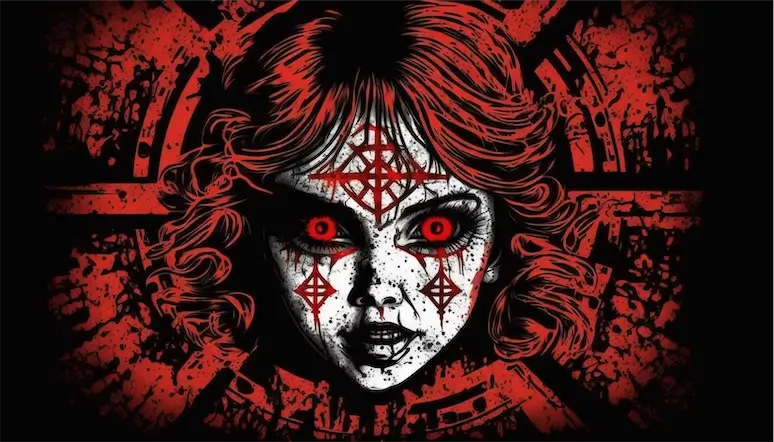The Real Annabelle Doll: The True Haunted Story
The Real Annabelle Doll: The True Haunted Story
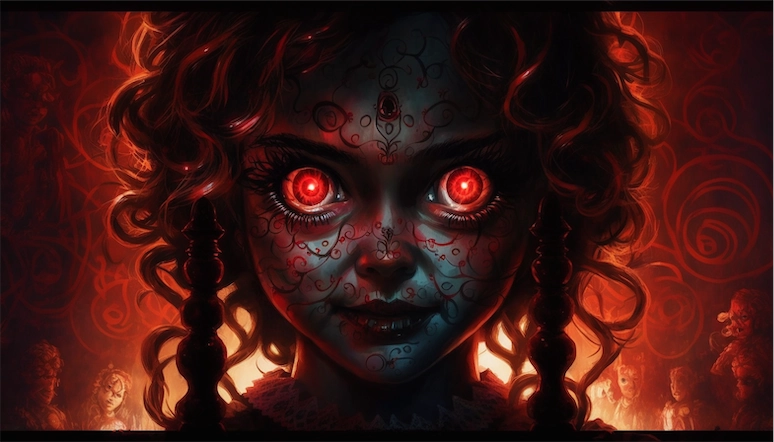
Introduction and Brief Summary
Being a podcaster with a deep interest in stories and in psychology, the story of the Annabelle doll has always piqued my curiosity. And I’m not alone, because the tale of a seemingly innocent Raggedy Ann doll getting possessed by an evil spirit has captivated people all over the world.
In recent years, the story of the real-life Annabelle doll has gained immense popularity among horror fans and paranormal enthusiasts alike.
The doll is said to be possessed by an inhuman demonic spirit that is capable of harming those around it. The story of Annabelle has been featured in various films, including the Conjuring movies, and the latest film, Annabelle Comes Home, features the Warrens’ son-in-law, Tony Spera, who helps to secure the possessed doll in a glass case.
The real-life Annabelle doll is now housed in the Warrens’ Occult Museum, which has become a special case due to local zoning laws.
The original doll was actually a Raggedy Ann doll, which was given as a birthday present to a young nursing student named Donna.
Strange things began to happen after the doll’s arrival, including bad dreams and notes that appeared to be written by the doll. With the help of a medium, it was determined that the doll was being inhabited by the spirit of a young girl named Annabelle Higgins, who had died in the area.
Father Hegan, an Episcopal priest, was called in to perform an exorcism and bless the apartment, but the doll’s activity continued.
The Warrens (see below) became involved in the Annabelle case and took the doll with them, securing it in their Occult Museum. In recent years, rumors of the doll escaping from its glass box and causing havoc have made their own headlines, but those rumors have been debunked by the Warrens’ son-in-law, Tony Spera.
In a recent interview, Spera confirmed that the doll remains safely behind glass and that holy water is regularly used to keep its inhuman presence at bay.
The Annabelle doll is just one of the many inanimate objects that have become associated with the Warrens’ collection and their work in the field of paranormal investigation.
The Warrens’ Occult Museum houses a variety of items, including haunted dolls, cursed objects, and other strange artifacts that are said to be inhabited by spirits or entities. The museum has become a popular destination for those interested in the paranormal, and social media has helped to spread the word about the museum and its unusual collection.
The Warrens themselves were devout Catholics and believed that their work was a way to help people who were dealing with spiritual or demonic activity.
They were often called upon to investigate strange occurrences throughout the United States, and their work has inspired many horror films over the years. Actors Patrick Wilson and Vera Farmiga have portrayed the Warrens in the Conjuring films, which have become a popular franchise in the horror genre.
In the case of Annabelle, the doll has become a symbol of the Warrens’ work and the dangers that can come from dealing with the supernatural. The doll’s story has inspired numerous horror films and has captured the attention of the general public. Despite the rumors and speculation, the real-life Annabelle doll remains safely locked away in its glass case, where it will hopefully remain for the foreseeable future.
If you want more detail: read on!
The True Story of the Annabelle Doll
The true story behind the Annabelle doll is a fascinating paranormal tale that has captivated people all around the world. The doll’s history may be traced back to the 1970s, when a young woman called Donna received a Raggedy Ann doll from her mother as a present. Donna was a student nurse at the time, and she shared an apartment in Hartford, Connecticut with her roommate Angie.
At first glance, the doll appeared to be a harmless toy. It wasn’t long, though, before Donna and Angie began to notice unusual things going on about the flat. The doll would migrate from one location to another seemingly on its own, with no explanation. The girls also began to uncover letters written on parchment paper about the flat, despite the fact that they had never had any parchment paper themselves.
As the paranormal activity intensified, Donna and Angie decided to seek the assistance of a medium. The doll was possessed by the spirit of a little girl named Annabelle Higgins, who died on the ground where the apartment complex was erected, according to the medium. The medium advised the girls that the doll was hazardous and that they should get rid of it as soon as possible.
Unfortunately, things went wrong when the doll assaulted Donna’s buddy Lou. Lou had always doubted the doll’s innocence and told Donna and Angie that the doll was malevolent. Lou was visiting the apartment one day when he heard unusual noises emanating from Donna’s room. As he investigated, he discovered the doll sitting on a chair rather than on the bed, where it had previously been placed. He felt a stinging pain on his chest, as if he’d been scraped by an unseen power.
Donna and Angie eventually enlisted the assistance of paranormal investigators Ed and Lorraine Warren, who proved that the doll was possessed by a malicious entity.

Ed and Lorraine Warren: Demonologists Extraordinaire
Ed and Lorraine Warren were a well-known husband and wife duo of paranormal investigators and demonologists. Ed was born in Bridgeport, Connecticut, New England, in 1926, and Lorraine was born in Monroe, Connecticut in 1927. They met while they were teenagers and married in 1945.
Ed and Lorraine launched the New England Society for Psychic Research in 1952, one of the country’s first paranormal investigating groups. The duo looked into a wide range of paranormal phenomena, such as hauntings, possession cases, and other unexplained occurrences. They rose to prominence after their involvement in the Amityville Horror case, which included a haunted mansion on Long Island, New York.
The Warrens were also well-known demonologists, and they were frequently called upon to assist with cases involving demonic possession. They were ardent Catholics whose faith was fundamental to their job as paranormal investigators. The pair saw their job as assisting those who were being terrified by the supernatural, and they worked diligently to investigate and document occurrences of paranormal activity.
Ed and Lorraine wrote several books about their experiences as paranormal investigators, including “The Demonologist” and “Ghost Hunters” over their careers. They were also the inspiration for various films, including “The Conjuring” and “Annabelle”.
Lorraine Warren died in 2019, while Ed Warren died in 2006. Despite their deaths, their influence as paranormal investigators and demonologists lives on.
From a paranormal standpoint, Ed and Lorraine Warren’s role in studying the Annabelle doll was critical in identifying the malicious spirit that was thought to be occupying the doll. The Warrens were well-known paranormal investigators and demonologists, and their involvement in the case added legitimacy and attention to it.
When the Warrens were sent to study the doll, they rapidly discovered that the situation was far more serious than they had anticipated. The Warrens concluded that the doll was possessed by an evil ghost after spending time with it and performing their own research.
The ghost that had possessed the doll, according to the Warrens, was not that of a deceased kid, as the medium had previously said.
Instead, the spirit was thought to be that of a demonic entity that had been connected to the doll. The Warrens felt that the devil was actively striving to possess the souls of those who came into contact with the doll and was using it as a conduit to hurt those around it.
The Warrens’ conclusion that the Annabelle doll was possessed by a malignant spirit was a crucial step in the story, and it contributed to the doll’s notoriety as one of the world’s most haunted artefacts.
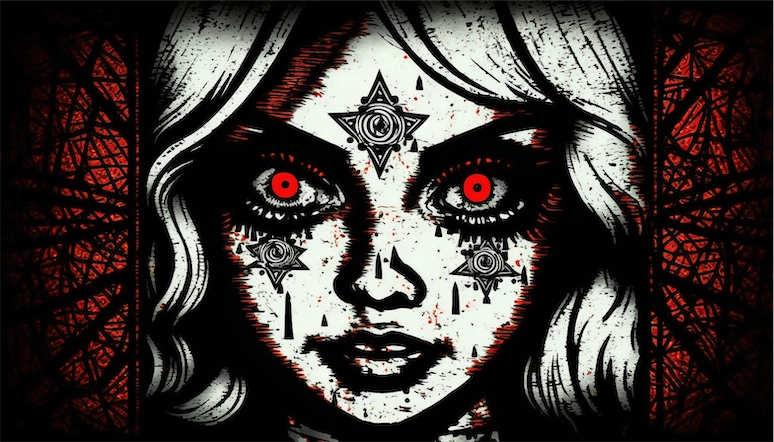
The Annabelle Doll In Film and Culture
Because of its reputation as a haunted object, the doll has been a popular subject in horror films and other media, and it has become one of the world’s most iconic and identifiable haunted objects.
The Annabelle doll has also gained popularity in horror films, most notably in the “Conjuring” universe. The doll is depicted as one of the haunted things in the Warrens’ paranormal museum in “The Conjuring” (2013). The story follows the Perron family and their encounters with a haunted farmhouse. The origin story of the doll is explored in “Annabelle” (2014), as a young couple encounters mysterious happenings after receiving the doll as a gift.
The film was followed by “Annabelle: Creation,” which dives deeper into the development of the doll and the demonic spirit that possesses it. “Annabelle Comes Home” (2019), the most recent film in the franchise, sees the Warrens bring the doll to their museum, only for it to unleash a slew of malicious spirits.
Aside from film appearances, the Annabelle doll has been the topic of countless books, documentaries, and other forms of media. Several popular TV shows, like “Ghost Adventures” and “Paranormal Witness,” have used the doll in episodes. The doll has also been the focus of numerous news articles and internet debates, with many people sharing their own experiences and thoughts about the doll’s alleged supernatural abilities.
The Annabelle doll is presented as a menacing and demonic energy in the film “The Conjuring,” terrorising a young couple. The doll is shown as a conduit for demonic activity, with its benign appearance masking its sinister nature. The film takes considerable liberties with the claimed genuine story of the Annabelle doll, but it has served to popularise the haunted object mythos.
The article on historyvshollywood.com points out several differences between the true story of the Annabelle doll and how it is portrayed in movies.
According to the story, the true Annabelle doll was a modern Raggedy Ann doll rather than a historical porcelain doll.
Furthermore, the Warrens did not execute an exorcism on the doll, but rather a blessing to cleanse the home of evil spirits.
Nevertheless, no deaths or injuries have been reported as a result of the doll, as represented in the films. These inconsistencies raise concerns about the story’s veracity and the motivations behind the significant alterations. Probably to make it more sensational and therefore earn more eyeballs and through those eyeballs, dollars.
The Annabelle Doll in Folklore
The Annabelle doll’s lasting fascination can be traced to a variety of elements, including its relationship to our dread of the unknown and our obsession with the paranormal.
Fear of the unknown is a universal human sensation that has been used for decades by horror filmmakers and writers. The Annabelle doll exemplifies this perfectly, as it represents the unknown and enigmatic. Its origins and exact nature are buried in secret and rumour, adding to its eerie and terrifying air.
The Annabelle doll narrative is rich in archetypes and motifs that are significant to our understanding of the human psyche. The possessed object is a prominent trope that plays on our innate dread of the unknown and the supernatural. The doll is also linked to the archetypes of the innocent child and the malicious spirit, creating a striking contrast that heightens the doll’s atmosphere of mystery and horror.
Aside from these characteristics, the doll’s appearance contributes to its continuing appeal. Its adorable and childish aspect stands in stark contrast to its malicious reputation, heightening people’s dread and fascination with it.
Another key aspect in the Annabelle doll narrative is the haunted house, which is a popular trope in horror literature and film. The existence of the doll in the house produces an aura of dread and unease, which heightens people’s terror and fascination with it.
Folklorists and scholars use the Aarne-Thompson-Uther (ATU) index to categorise and analyse folktales and other sorts of folklore. Antti Aarne, a Finnish folklorist, created it, and it was later modified by American scholar Stith Thompson and German academic Hans-Jörg Uther.
The ATU index is used to identify and analyse recurring themes and motifs in folktales from many cultures and time periods. It enables scholars to compare and analyse stories from other cultures, as well as discover underlying themes and cultural values portrayed in these stories.
The ATU index is divided into numbered categories, each representing a different form of folklore story or pattern. Category ATU 425, for example, symbolises the motif of the enchanted frog or toad, but category ATU 706 depicts “The Magic Flight” type of story.
Many ATU index themes appear in the Annabelle doll narrative, including the motif of the possessed object (ATU 520), the motif of the haunted house (ATU 331), and the motif of the evil spirit (ATU 331). (ATU 361).
Ultimately, the archetypes and motifs in the Annabelle doll narrative are important to our knowledge of the human mind because they touch into our fundamental fears and desires. They also serve as a reminder of folklore and mythology’s enduring capacity to affect our perceptions of the world around us.
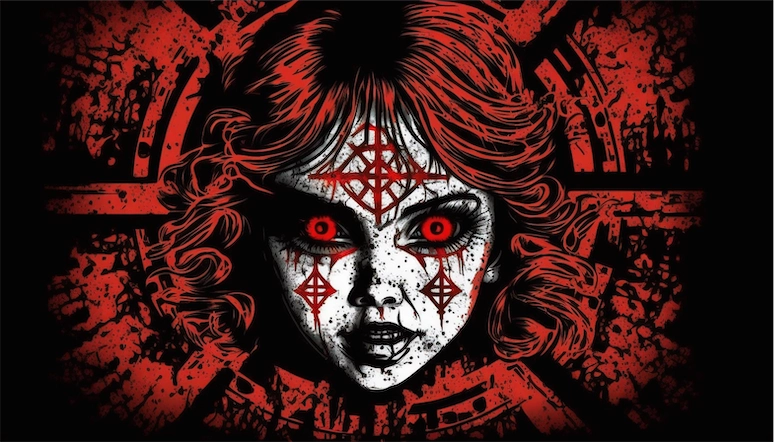
The Annabelle Doll from a Psychological Perspective
Psychoanalysis has been used as a tool to study storytelling and cultural artifacts by examining the underlying psychological themes and motifs that are present in these narratives. Through analysis of symbols, archetypes, and narrative structures, psychoanalysis can reveal the unconscious desires, fears, and anxieties that are expressed in stories and cultural artifacts.
This approach has been used by scholars to study a wide range of cultural forms, including literature, film, art, and folklore, in order to better understand the psychological and cultural dynamics that underlie human behavior and belief systems.
From a Freudian perspective, the story of the Annabelle doll can be understood as an expression of our deep-seated anxieties about the unconscious mind and the power of the id.
The doll represents the id, the primal and instinctual part of our psyche that is often hidden from our conscious awareness. The fact that the doll is possessed by a malevolent spirit can be seen as a manifestation of our fear that our own unconscious desires and impulses could become uncontrollable and destructive.
From a Jungian perspective, the story of the Annabelle doll can be understood as an exploration of the archetypal themes and motifs that are present in our collective unconscious.
The doll represents the archetype of the possessed object, which is a common motif in mythology and folklore. The malevolent spirit that possesses the doll can be seen as a manifestation of the Shadow, the dark and repressed aspects of our psyche that we try to deny and suppress.
The story of the Annabelle doll can thus be seen as a reminder of the importance of confronting and integrating our shadow in order to achieve wholeness and psychological balance.
The fascination with the Annabelle doll relates to cultural and historical preoccupations in America during the period when the story of the doll became popular.
The 1960s and 1970s were a time of social upheaval and change in America, with many people questioning traditional values and institutions. This period was also marked by a rise in interest in paranormal phenomena and the supernatural, with many people exploring new spiritual practices and belief systems.
Was The Annabelle Doll A Hoax?
There have been allegations that the Warrens fabricated evidence in their investigations, and these claims have gained traction in recent years.
One source of these claims is a 2017 article from History Collection, which highlights 16 reasons why the true story behind The Conjuring is even creepier than the movie. Among these reasons are allegations of the Warrens faking evidence, including recordings and photographs.
The article cites several examples, such as a recording of an alleged demonic voice that was later revealed to be the voice of Ed Warren himself. Other examples include photographs that were taken using a double exposure technique to create an illusion of a ghostly figure.
These allegations have led to increased scrutiny of the Warrens’ methods and the authenticity of their investigations.
The book “The Demonologist: The Remarkable Career of Ed and Lorraine Warren” provides an in-depth examination of the Warrens’ investigations and their impact on popular culture.
According to the story, the Warrens were “amateur ghost hunters” who were frequently chastised by expert sceptics for their lack of scientific rigour and claimed evidence falsification. The article outlines multiple incidents in which the Warrens were accused of orchestrating events or used deception to provide the appearance of paranormal activity.
The book does, however, acknowledge the Warrens’ role in popularising the concept of demonic possession and moulding modern perceptions of the paranormal. Ultimately, the essay provides a balanced view of the Warrens, recognising both their failings and their influence on popular culture.
It is also worth noting that many people believe in the validity of the Annabelle story and that the Warrens were honest in their inquiries. Certain parts of the story may have been expanded or exaggerated over time, but this does not always imply that the entire story is incorrect.
There are numerous reasons why someone would perpetrate a hoax like this. It could be for monetary gain, celebrity, or simply the thrill of deceiving others. It is difficult to say who might have perpetrated such a hoax, as numerous persons could have been engaged. It is crucial to note, however, that just because something is a hoax does not mean it is not culturally meaningful or worth examining.
Because I have never had any exposure to this kind of thing, and I’ve never met anyone who has, but yet I am fully aware that the press and film and publishing businesses stoke up hysteria by promoting extravagant and ultimately fallacious stories to titillate and terrify the public, I am inclined to believe the Annabelle Story is a hoax.
The Annabelle Doll and Religious Faith in America
The Annabelle doll narrative is not only a horror story, but it also reflects the religious landscape of America at the time it was created. The Warrens were fervent Catholics who were intimately involved in the doll inquiry, and their religious views influenced their perception of the events surrounding the doll. The doll was viewed as a tool of evil, inhabited by a malignant spirit, and the Warrens’ remedy was to have an exorcism performed by a Catholic priest to evict the ghost.
The fascination with demonic possession can be explained as a human yearning for control in an otherwise chaotic world. It represents a cultural apprehension about morality, sin, and the human struggle. Individuals can cope with trauma and make sense of their surroundings by externalising and personifying evil.
Demonic possession explains incomprehensible phenomena and provides a concrete entity to confront and defeat. This urge for control is especially strong during times of societal upheaval, such as war or economic downturn.
It is also tied to a broader societal trend of looking for external solutions to internal difficulties, such as relying on medication or other external interventions to manage mental health issues.
There was a huge movement in religious sentiments in America throughout the 1960s and 1970s, when the Annabelle doll was active.
Emerging spiritual and intellectual movements, such as the New Age movement, which emphasised individual spirituality and the goal of personal progress, were challenging traditional forms of religion, including Catholicism. This societal shift could have influenced the Warrens’ infatuation with the Annabelle doll and their method to examining it.
Nevertheless, the Annabelle doll’s origins as a Raggedy Ann doll, a popular and harmless childhood toy, may have influenced its cultural significance. The concept of an evilly tainted childhood toy taps into deep-seated worries and anxieties about the loss of innocence and the corruption of the pure.
Finally, the Annabelle doll narrative is not simply a horror story, but it also reflects the changing religious environment in America during the 1960s and 1970s. It reflects deep-seated fears and anxieties about the loss of innocence and the contamination of the pure, and it represents a battle between established religious ideas and emerging spiritual groups.
Suggestions For Further Reading About The True Annabelle Doll
The story of the true Annabelle doll is a mix of fact and fiction.
According to 1, Annabelle is an allegedly haunted Raggedy Ann doll, housed in the occult museum of paranormal investigators Ed and Lorraine Warren. The doll was moved there after supposed hauntings in 1970. A character based on the doll is one of the antagonists that appear in the Conjuring Universe. The Warrens’ story of the doll served as inspiration for the Annabelle doll character depicted in The Conjuring Universe, a film series that includes Annabelle (2014), Annabelle: Creation (2017), and Annabelle Comes Home (2019).
According to 2, Donna, a former owner of the Annabelle doll, claimed that she would come home to find penciled messages written in childlike writing on parchment paper. The messages read “Help Us” and “Help Lou” (Lou was Donna’s roommate Angie’s fiancé). However, this account has been criticized by skeptics who argue that it is unlikely for spirits to communicate through writing.
Ed and Lorraine Warren’s book, “The Demonologist,” contains many references and stories about Annabelle herself (or rather itself) according to 3.
In addition, 5 reports that Lou picked up Annabelle and chucked her raggedy body across the apartment floor. Lou belittled the doll shouting that:
“She is nothing more than a Raggedy Ann doll… She can’t hurt anybody.”
As soon as Lou launched the doll, he is said to have provoked the demonic presence attached to it, causing “seven psychic wounds to appear on his body — four slash marks on his chest and three on his stomach.”
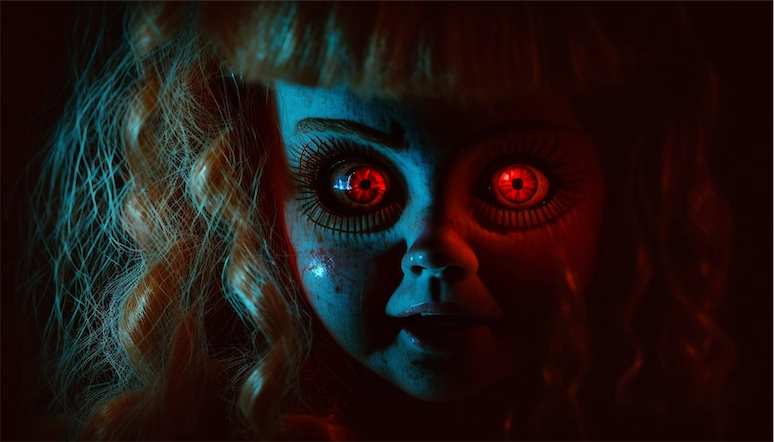
Conclusion
As we near the end of this article, it’s worth pausing to consider the persistent obsession with the Annabelle doll. While some may regard it as paranormal evidence, others may dismiss it as an elaborate hoax or a product of our collective imagination.
Whatever your own opinions, it’s difficult to dispute the Annabelle doll’s influence on popular culture, from its inclusion in films and literature to its standing as a cultural symbol. But what does this tell about our culture as a whole?
Perhaps it represents our continuing curiosity with the unknown and our desire to believe in something larger than ourselves. Perhaps it alludes to deeper societal preoccupations and concerns.
While we continue to debate the true nature of the Annabelle doll, keep an open mind and a good dose of scepticism in mind. After all, it’s the exchange of ideas and debate that makes these cultural events so intriguing in the first place.
Hence, whether you believe in the paranormal or not, I welcome you to share your ideas and comments in the space below. Let’s keep the conversation going by delving further into the mysteries of the human psyche and the unusual stories that capture our imaginations.
Thank you for taking the time to read this little piece on the true story of the Annabelle doll and its cultural significance. If you enjoyed this article, please give it a thumbs up and share it with your friends and family.
Don’t forget to follow us on YouTube for more videos on paranormal phenomena, cultural analysis, and psychological insights.
We hope you enjoyed this film and thank you for your support. Stay tuned for our next video, in which we’ll delve into another fascinating subject.
References
- Annabelle (doll) – Wikipedia: https://en.wikipedia.org/wiki/Annabelle(doll)
- Real Annabelle Doll – History vs. Hollywood: https://www.historyvshollywood.com/reelfaces/annabelle/
- The Disturbing “True” Stories Surrounding the Real Annabelle: https://allthatsinteresting.com/annabelle-doll
- Annabelle Comes Home Has A Sly Reference To The Real Doll: https://www.cinemablend.com/news/2476049/annabelle-comes-home-has-a-sly-reference-to-the-real-doll
- The Legends Behind the Artifacts of ‘Annabelle Comes Home’: https://www.hollywoodreporter.com/movies/movie-features/annabelle-comes-home-real-stories-behind-artifacts-1216619/
- “The Exorcism Fad” by Michael Cuneo – https://www.theatlantic.com/magazine/archive/2001/08/the-exorcism-fad/302274/
- “The Lure of the Dark Side: Satan and Western Demonology in Popular Culture” by Christopher Partridge – https://www.jstor.org/stable/10.1525/j.ctt9qh1pk
- “Demonology Today” by Richard Gallagher – https://www.nytimes.com/2016/07/05/opinion/demonology-today.html
- “The Psychology of Possession” by Nicholas R. Eaton – https://www.psychologytoday.com/us/blog/dark-personalities/201704/the-psychology-possession

